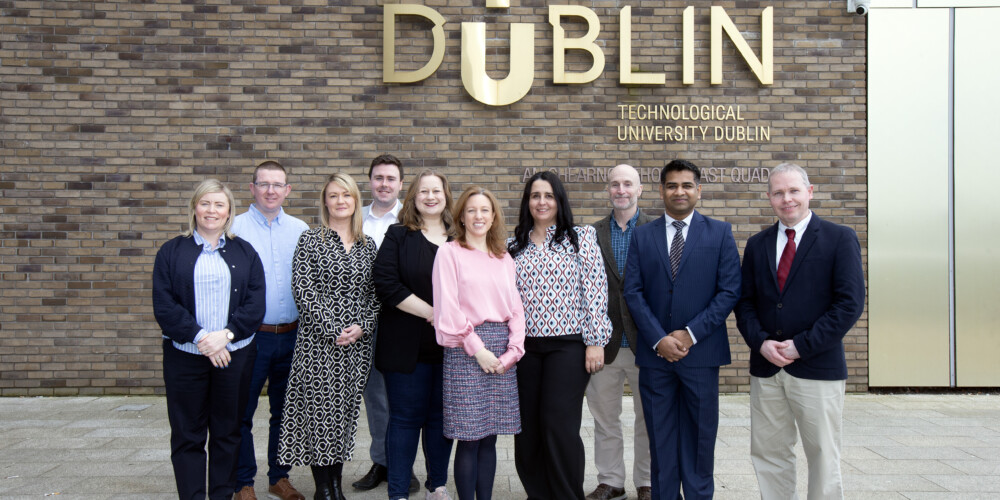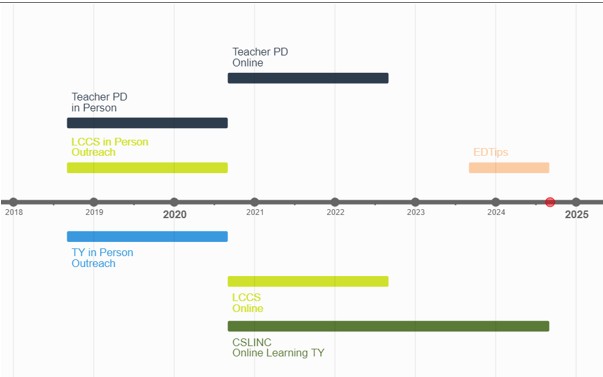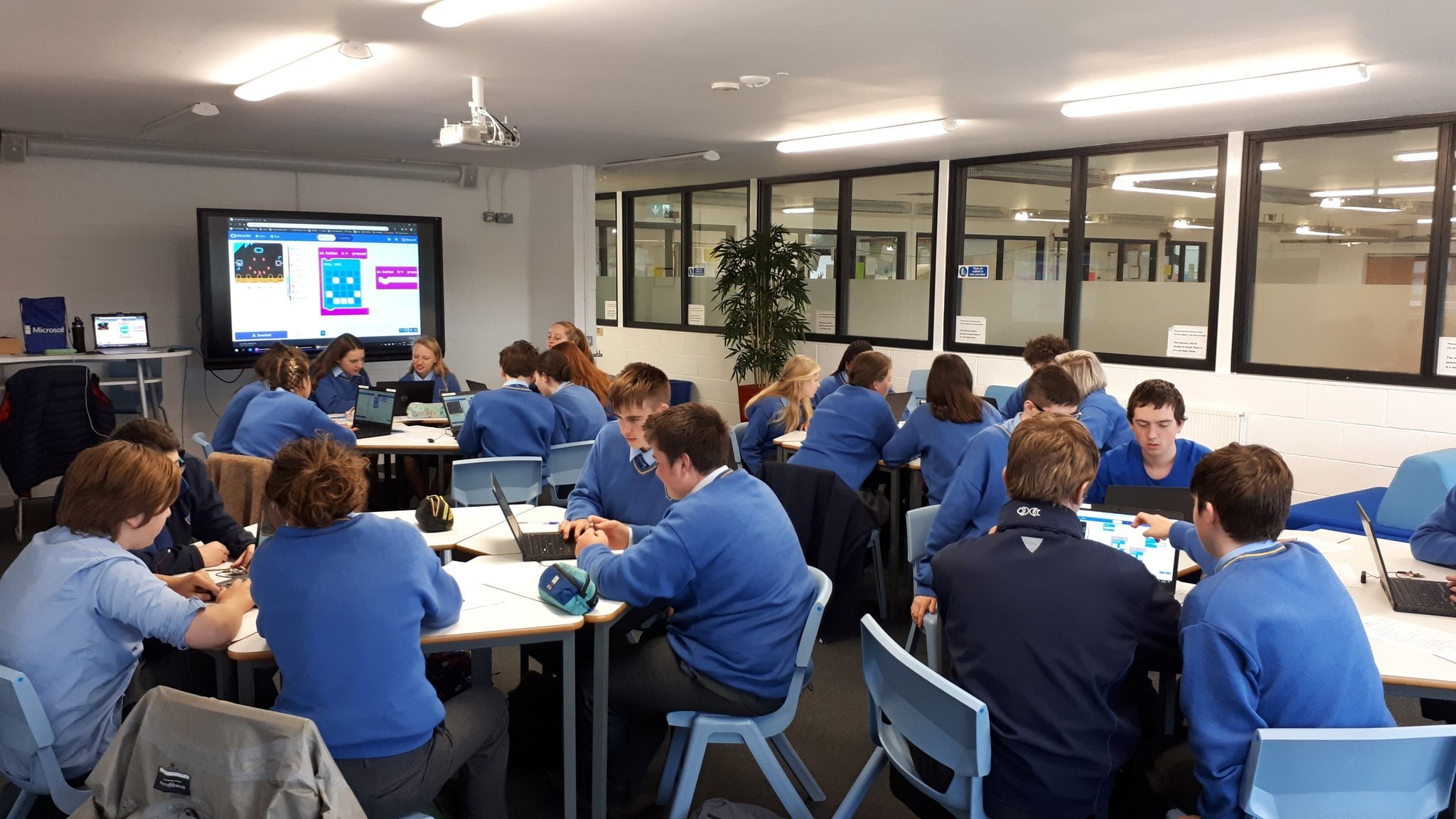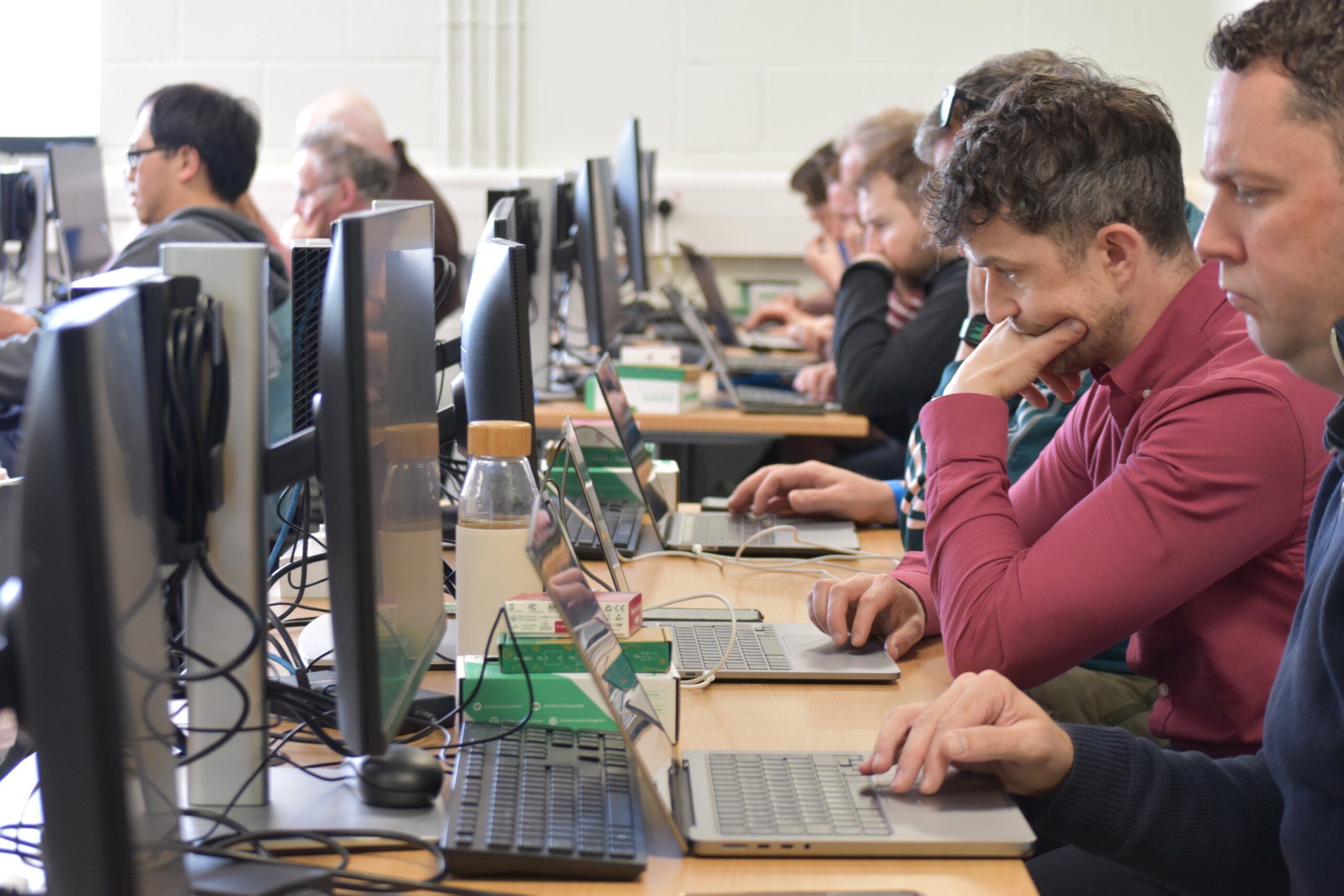
Inclusive Computing: National outreach for teacher training and student empowerment
Who we are
TU Dublin is Ireland’s first technological university, established in January 2019. Deeply embedded in the region, the University has campuses in Dublin city centre (at Grangegorman, Aungier Street, and Bolton Street), and in Blanchardstown and Tallaght.
TU Dublin’s CSINC (Computer Science Inclusive) is an applied research centre based in the Faculty of Computing, Digital and Data at TU Dublin. CSINC activities are focused on improving the teaching and learning of Computer Science through providing student camps and workshops, conducting longitudinal research, and facilitating Teacher Continuing Professional Learning (CPL) sessions on topics such as Pedagogical Content Knowledge from primary up to higher education.
What we did
In 2018, a new elective Leaving Certificate subject, Computer Science (LCCS), was introduced to 40 ‘Phase One’ schools. It has since been extended to over 250 schools, approximately 35% of all second-level schools in Ireland. In 2025, a new primary curriculum will be rolled out in all 3,200 primary schools nationwide. The new STEM subject area of the curriculum sees the introduction of a mandatory computing component. This means that almost 43,000 teachers across primary and second level will deliver some form of computing education.
The CSINC research group was established in 2018 with the objective of addressing challenges in formal computing education through a national comprehensive outreach programme across primary and secondary education, consisting of:
- teacher training and supports to build confidence
- the delivery of innovative modules to enhance the student experience (bringing together multiple stakeholders) and focusing on inclusivity
- awareness and access to prepare students for third level computing

Figure 1: Implementation timeline of the initiative
Transition Year in-person outreach (2018–2020)
Following a pilot phase in 2017, the team developed a Transition Year outreach programme, incorporating feedback from 2,900 students across 95 schools.
The programme consisted of three components:
- introduction to the roles and careers of a computer scientist
- hands-on coding
- hands-on problem solving
The team visited interested schools, bringing laptops to ensure all schools had access, and worked with up to three classes per day, typically for two-hour sessions. This resulted in 270 school visit days for outreach camps reaching 6,761 students.

Figure 2: Student Workshop in Kinsale
Leaving Certificate Computer Science outreach (2018–2022)
In parallel to the more general Transition Year outreach, the team aimed to support schools by visiting Phase One schools and delivering a longer session (4–6 hours). This was not only to support the students, but also the teachers, specifically as the majority of the Phase One teachers (possibly up to 90%) had no formal computing qualification. Surveys used here were designed to measure student self-efficacy pre- and post-camp to determine the impact of this more specialised outreach. When COVID 19 struck, the outreach pivoted online. Since 2018, the team has worked directly with around 1,600 Leaving Cert students across 93 schools, collecting 1,495 surveys.

Figure 3: Student Workshop in Kilkenny
Teacher Personal Development (2018–2022)
Between 2018 and 2020 the team travelled nationally, utilising work of Education Support Centres Ireland (ESCI) to engage with schools and industry, running 29 national Personal Development sessions and collaborating with industry partners, including Google (who provided space and a Google Educator Grant) and Microsoft Ireland (who provided funding for outreach). Following COVID 19 and in response to the growing number of schools delivering Leaving Certificate Computer Science, we moved online for our teacher Personal Development, where a redesign took place. As teachers’ content knowledge grew, the focus was shifted towards pedagogical content knowledge, using tools like PRIMM (Predict, Run, Investigate, Modify, Make). This consisted of live coding, design thinking and Q&A.

Figure 4: CSinc NVIDIA Teacher Training, TU Dublin 2024
CSLINC (2021 – Present)
During 2020, CSINC started to develop CSLINC, an online learning platform (Computer Science Inclusive Learning). We developed the software to register students and teachers into classes and implemented an online VLE using the latest accessibility tools. In addition, three modules were initially designed, eight hours in duration (based on feedback from a focus group) which aimed to provide Transition Year certification. The pilot was run in 2021 with approximately 50 schools and 3,500 students. Since then, a total of 14 modules have been developed either in collaboration with or supporting academic and industry partners.
On average, approximately 300 teachers, 200 schools (with 25% of those schools being DEIS, higher than the national DEIS proportion) and over 9,000 students are registered on the platform per year. To date, CSLINC, has been used by almost 25,000 students from every county in Ireland. A built-in survey collection process for students and teachers was also developed.
EDTips (2023 – Present)
We recently commenced EDTips (Enabling Digital Technology in Primary Schools), securing AWS as a partner for this project where CSLINC will be leveraged to host primary-specific teacher resources to support all 3,200 primary schools and their 42,000 teachers for the computing component of the STEM curriculum.
Partnerships
Through collaboration on the above initiatives, CSINC has established relationships with several industry and higher education partners, including Amazon in Communities (who supported the EDTips application through financing a symposium and sending a digital technologies kit to every primary school in Ireland, Workday (who provide support on project management for the EDTips project), and ESERO (who developed two courses for CSLINC). Courses for CSLINC were also provided by Maynooth University, Dell, Blackrock Observatory, UCD, ML Labs & Huawei, Microsoft Dreamspace, University of Limerick & LERO (with UC Berkley’s BJC material), and Fidelity Investments.
Impact Achieved
Transition Year in-person outreach (2018–2020)
The initial goal of this CSINC outreach intervention was to reach as many students as possible, with diversity at its core, to measure and improve perceptions and promote Computer Science as a subject and career area. We conducted pre- and post-surveys on perceptions and attitudes towards computing, collecting 1,202 responses from Transition Year students. The responses were analysed under three lenses: diversity of the students attending; student perceptions of Computer Science prior to the outreach model and finally, whether the outreach model could positively influence students to consider a career in Computer Science.
Student diversity improved significantly over time. CSINC specifically designed the outreach based on research-informed best practices and over the three years saw a significant growth in female-identifying attendees. We also reported a DEIS reach similar to the national average.
| Year | Male participants | Female participants |
| 2017–18 | 56% | 44% |
| 2018–19 | 45% | 54% |
| 2019–20 | 39% | 61% |
Pre- and post-outreach responses were reviewed to identify if the camp had impacted the students to consider a career in computing. The pre-outreach perceptions were concerning as prior to the camp, terms like ‘boring’, ‘hard’, ‘sitting’ and ‘difficult’ appeared in a significant number of responses (full public access paper here). This may indicate that students had formed a very unrealistic perception of computing and that interventions may be needed (like this TY initiative).
There were 1,110 responses for this question: ‘I would consider a career in computing / IT / programming?’ The options ranged from strongly agree (SA) to strongly disagree (SA).
| SA(1) | A(2) | Neutral(3) | D(4) | SD(5) | Average | STD | |
| Pre- outreach | 130 | 359 | 311 | 214 | 96 | 2.8 | 1.1 |
| Post- Outreach | 227 | 541 | 196 | 122 | 24 | 2.3 | 1 |
Analysis of these responses saw a very statistically significant improvement post-outreach in students’ willingness to consider a career in computing, signifying a positive impact.
Teacher Personal Development (2018–2022)
In total, almost 1,500 teachers were reached, with 825 surveys collected. ‘Programming self-efficacy’ (PSE) was selected as the instrument for evaluating the computer science teachers. Research indicates that elevated PSE significantly influences teachers’ perspectives on teaching and instructional strategies, fostering a positive outlook that transforms challenges into opportunities for personal growth and learning, thus translating into positive student experiences. Conversely, teachers grappling with low self-efficacy may interpret obstacles as signs of inadequacy, potentially leading to premature disengagement to evade perceived failure. Improving PSE was therefore a core metric for measuring impact of the Personal Development programme. From the 825 teachers who responded to the surveys, there was a very statistically significant improvement in PSE (using a Wilcoxon Signed Rank test) with a P value < 0.0001.
CSLINC (2021 – Present)
The initial phase of the impact research was from teachers (the second phase for students is in progress). Of the respondents, 55% identified as female, with an average age of 40, and less than 40% were teaching Leaving Certificate Computer Science. 62% of those who didn’t teach it currently stated they would be interested in delivering it in future. Concerningly, 50% of those delivering the TY programme said they were told to teach it (rather than self-selecting), meaning their intrinsic motivation may be limited.
The teachers reported that they strongly agreed (40%) or agreed (35%) that they found the overall learning experience and the confidence CSLINC built to be very good. Unfortunately, there was no difference in pre- and post-changes for overall Programming self-efficacy.
Furthermore, when Programming Self-Efficacy was compared between Leaving Certificate Computer Science teachers who had used CSLINC for one year to support their teaching with those delivering Leaving Certificate Computer Science without CSLINC, we found evidence which suggested that use of CSLINC alone may not be enough to fully support teachers to take on the Leaving Certificate Computer Science subject (The paper with full details of this study was accepted and will be presented at: 13th Computing Conference 2025, 19-20 June 2025 | London, United Kingdom).

Figure 5: EDTips Symposium in Kildare 2024
What we learned
Secondary (Teacher CPL, and CSLINC)
The development and ongoing evaluation of the initiative resulted in several key learnings:
- The establishment of industry and higher education partnerships was essential in enhancing the impact of the initiative.
- The incorporation of feedback mechanisms into all initiatives was fundamental in ensuring outputs, outcomes, and impact could be accurately measured.
- Addressing gender inequality in disciplines such as computer science requires interventions at various points throughout students’ academic journeys.
- Initiatives aimed at addressing complex societal issues often requires several targeted initiatives designed for multiple stakeholders to be effective.
- The ability to adapt and remodel an initiative is fundamental. For example, during COVID 19, the Leaving Certificate Computer Science student outreach pivoted online and had to undergo a significant redesign; while 4–6 hours worked well in-person, it was deemed too long for students online due to the lack of live-coding and lab events.
- While teachers are often interested in teaching new subjects, various factors such as not feeling qualified to teach it can impact their teaching efficacy; targeted supports are necessary for both staff and students.
Primary (EDTips)
Following a general expression of interest, over 300 primary schools nationally signed up to the pilot phase of the project; we now have pilot schools in every county in Ireland, approximately 30% of them are DEIS, and five are located in the Gaeltacht area. As part of the pilot phase, our initial teacher survey indicated that:
- 11% of respondents have never taught any Digital Technology in classrooms before.
- over 25% of respondents do not feel qualified to teach Digital Technology in the classroom.
- over 50% of respondents feel anxious about teaching Digital Technology.
- 63% of the respondents accessed and used our resources and found our ‘Teaching Video and Activity Guide’ extremely helpful.